An In-Depth Look at the Diamond Disk
Written by Vice President of Engineering for Summers Manufacturing
The Diamond Disk was developed in 1984 by Ardon Herman, a farmer and inventor from Brinsmade, North Dakota. Summers had been working with Ardon since the early 1970s on a variety of projects, with the most commercially successful being the Herman Culti-Harrow. 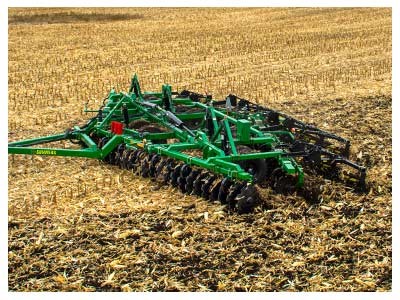 Ardon’s farm is in a productive area of central North Dakota. However, in addition to surface stones, there are also many large buried rocks. Conventional X-frame disks have a high concentration of weight in the center, so Ardon was experiencing blade breakage in this location. Another issue is that X-frame disks rely on the rear tractor tires to provide blade depth control. Ardon’s fields have a variety of rolling hills and tilled waterways, which require more precise depth control than what he was getting with his X-Frame disk. Ardon wanted to solve both of these problems, so he designed the floating hitch Diamond Disk, which follows the ground contour and, when a rock is contacted, the weights of the front gang and rear gang are lifted independently.
Ardon’s farm is in a productive area of central North Dakota. However, in addition to surface stones, there are also many large buried rocks. Conventional X-frame disks have a high concentration of weight in the center, so Ardon was experiencing blade breakage in this location. Another issue is that X-frame disks rely on the rear tractor tires to provide blade depth control. Ardon’s fields have a variety of rolling hills and tilled waterways, which require more precise depth control than what he was getting with his X-Frame disk. Ardon wanted to solve both of these problems, so he designed the floating hitch Diamond Disk, which follows the ground contour and, when a rock is contacted, the weights of the front gang and rear gang are lifted independently.
After building prototypes, another feature of the Diamond Design quickly became apparent: maintaining field finish during turns. With a conventional X-Frame design, slight changes in direction cause gouging and unlevel field finish, but the Diamond Design can be turned without this happening.
I started working with the Diamond Disk in 1985. I purchased one of the first prototypes for my farm and have always been impressed by the versatility, durability and field finish left by the Diamond Disk. Fast-forward to 2009, and the Upper Midwest had been in an unusually wet cycle since the mid 1990s. In most years this meant good crops, but increasing amounts of residue and wet post-harvest conditions became challenging for the Diamond Disk. While it was still an extremely useful tool, the window of opportunity for tillage was limited by moisture conditions. I tried several versions of blade scrapers, each working well in certain conditions, but not in all conditions. Believe me, I know how frustrating it is to feel the tractor pull down, knowing that one or more disk gangs have stopped turning and is pushing a large pile of soil and residue.
Two of the most successful products currently built by Summers are the Supercoulter and Diamond Disk. The Supercoulter is meant for residue management and vertical tillage, while the Diamond Disk excels in primary tillage applications. Comparing the two, I knew that it is nearly impossible to plug the gangs on a Supercoulter. My idea for the DT Series was to build a machine with the best features of both the original Diamond Disk and Supercoulter. To provide a smooth soil profile at the center line of the Diamond Disk, we had been using two low-concavity, notched blades on the rear center for many years. I thought it was worth building a prototype with this same blade across the entire machine.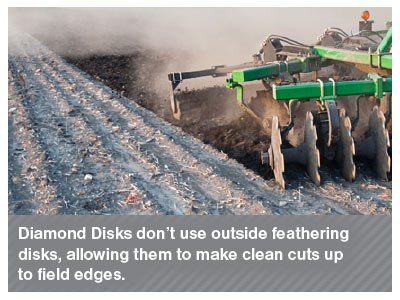 Did it work? Absolutely. The low-concavity notched blades of the DT have worked above and beyond my expectations. Nothing I did with the scraper design matched the ability to go through high residue and wet conditions like the DT.
Did it work? Absolutely. The low-concavity notched blades of the DT have worked above and beyond my expectations. Nothing I did with the scraper design matched the ability to go through high residue and wet conditions like the DT.
Other farmers have also been very impressed with the ability of the DT to work through wet areas — particularly the second pass. After wet soil has been turned once, there often is not enough firm soil to drive disk gangs, and once a gang stops turning the machine will plug. Disk owners often work the ground once, then wait for hours, if not days, to let it dry before going back to make a second pass. The DT lets you complete both passes at the same time with minimal plugging.
In certain conditions, the shallow concave blades can be more aggressive than full concave blades. Even though the full concave blades are designed to get more lateral movement of soil, hard and dry conditions can cause penetration issues. With full concave blades, once a certain depth has been achieved, the backside of the blade can keep the machine from penetrating deeper. In these conditions the shallow concave blade is able to cut deeper. Farmers who have traded their Diamond Disk for a DT notice that it takes more power on their headlands because the machine maintains its depth rather than working out of the ground in hard conditions.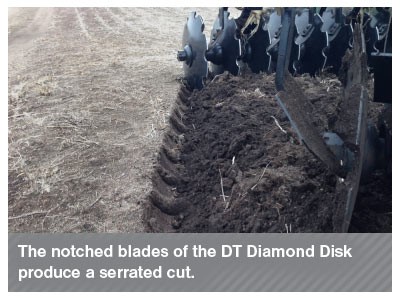 A smoother field finish in sod and CRP ground is another benefit. The notched blades produce a serrated cut, providing a tear point in the heavy strips of sod coming off the blades. Instead of dealing with huge slabs, you have smaller, more manageable pieces for a smoother, more level field finish. The tractor operator on the next pass over the field is very appreciative of this feature!
A smoother field finish in sod and CRP ground is another benefit. The notched blades produce a serrated cut, providing a tear point in the heavy strips of sod coming off the blades. Instead of dealing with huge slabs, you have smaller, more manageable pieces for a smoother, more level field finish. The tractor operator on the next pass over the field is very appreciative of this feature!
Myself and another Summers engineer now own DT Diamond Disks for our own farms.
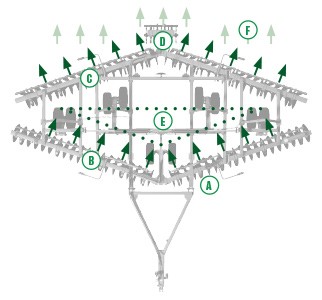 How a Diamond Disk works:
How a Diamond Disk works:
A. Diamond shape floats over rocks without damage
B. 19-degree front gang moves soil inward
C. 18-degree rear gang returns soil outward to eliminate ridging without the use of outside feathering disks
D. The rear five-blade finishing coulter sizes residue and levels the soil
E. Triangular wheel arrangement prevents ridging, skipping and gouging
F. Finishing options create the ideal seedbed






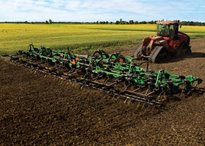
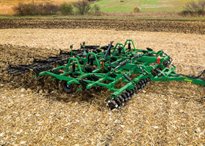
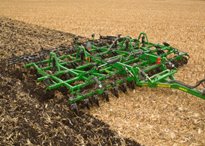
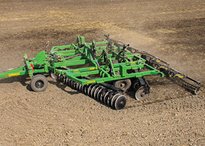
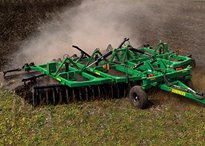
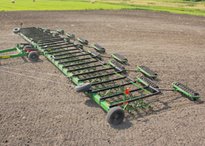
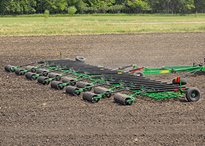
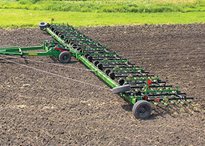
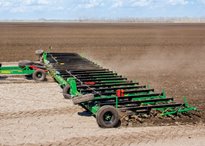
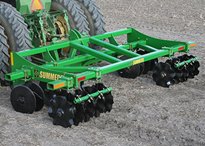
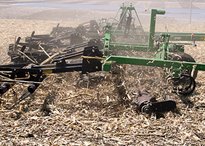
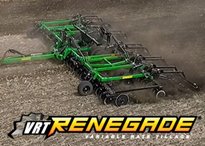
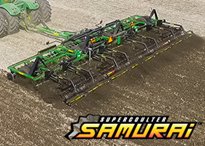

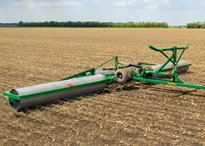
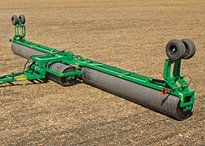
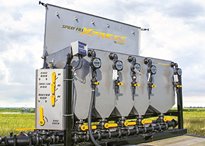


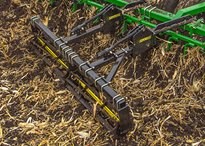
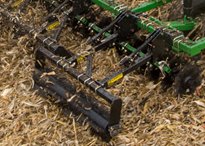
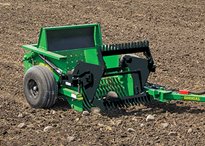
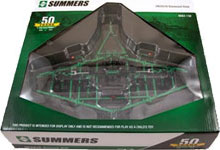 Hats, Diecast Models, Gloves and More!
Hats, Diecast Models, Gloves and More!
 Library
Library